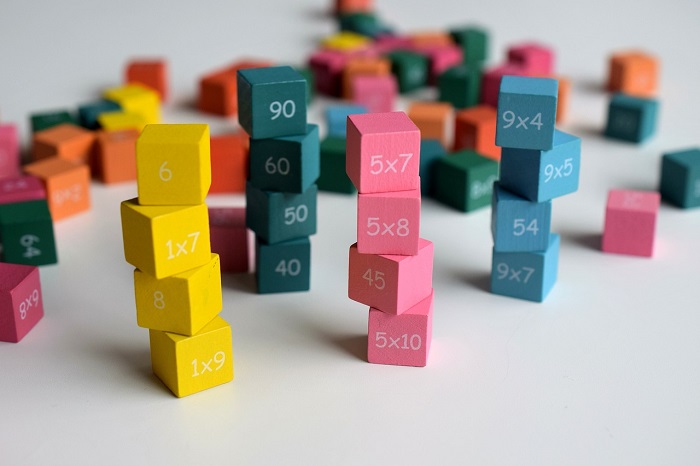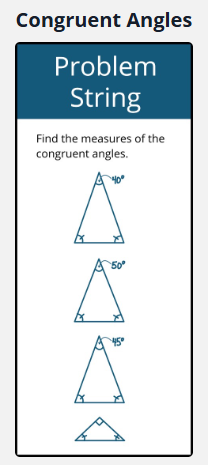- MN ABE Connect
- Archive
- Cultivating Curiosity: Math Routines in Action
 December 2, 2024
December 2, 2024
Cultivating Curiosity: Math Routines in Action
Kelly O'Brien, TeacherTeaching math in a multilevel classroom is hard. It’s also full of curiosity. Learning. Laughs. But to get to the good stuff, you need intentional planning and a solid curriculum.
Earlier this year, I’d been living in the “hard” parts too often. Then Summer Institute happened. Two workshops sent me home with practical math routines that helped spark curiosity and joy in my classroom. These versatile routines have students discovering answers for themselves rather than mere memorization of an algorithm. And the best part? They’re low prep, high reward.
Summer Institute Recap
At Summer Institute, Minneapolis Adult Ed teacher Katy Chiqui led Building Numeracy with Problem Strings and Flexible Routines to Build Numeracy. In these workshops, she taught effective facilitation of problem strings.
Problem Strings
 Problem strings, popularized by Pam Harris of Math is FigureOutAble, are intentionally sequenced problems meant for students to construct patterns independently. A simple string might be 6+6, 7+6, 13-6, and 14-6, sequenced to connect addition to subtraction; visit Math is FigureOutAble for more examples.
Problem strings, popularized by Pam Harris of Math is FigureOutAble, are intentionally sequenced problems meant for students to construct patterns independently. A simple string might be 6+6, 7+6, 13-6, and 14-6, sequenced to connect addition to subtraction; visit Math is FigureOutAble for more examples.
To effectively teach a problem string, Katy emphasized wait time using the waterfall method for online classes and student-teacher signals for in-person classes to indicate readiness. Once students share their answers, the real work begins.
As students explain their thinking, the teacher writes the number sentences described. Students build on each other’s thinking and use the new strategies with the next problem in the string. Because the routine is about making student thinking visible, it can be used in many math subject areas from number sense to algebraic thinking to geometry.
“I Have, You Need”
Katy also introduced another zero-prep routine: “I Have, You Need.” This routine builds familiarity with partner numbers – numbers that add up to make a specific number, like 6 and 4 for 10. In the routine, the teacher identifies a goal number, like 10 or 100. From here, the teacher says “I have [number]. You need ….” Students fill in the partner number to reach the goal. For example, “To get to 10, I have 8. You need…” (students say 2).
This routine can be modified depending on the class learning targets. For example, you could use fractions or decimals to get to 1. For geometry, you could do pairs to get to 90 or 180 degrees.
The Math Routines in Action: A Classroom Report-Out
“I Have, You Need” in Action
Energized by these sessions, I introduced “I Have, You Need” to class. This routine was beyond easy to implement. Literally zero prep and only quick mental math needed.
After a little repetition, students were able to work with partners and play the game without me. It was also an easy routine for our class volunteer to use while working one-on-one with students. For students more quickly discouraged, the questions can be tailored to give some easier wins alongside the challenging partner numbers.
Problem Strings: Take One
 Encouraged by the success of “I Have, You Need”, I tried a Problem String next. I’ll admit – I was rusty and made quite a few mistakes. I used the Math is Figureoutable Money Model string. From the start, I didn’t give strong instructions. So what happened? Students were shouting out answers right away. I lost the point of discovery. Ok. Mistake #1.
Encouraged by the success of “I Have, You Need”, I tried a Problem String next. I’ll admit – I was rusty and made quite a few mistakes. I used the Math is Figureoutable Money Model string. From the start, I didn’t give strong instructions. So what happened? Students were shouting out answers right away. I lost the point of discovery. Ok. Mistake #1.
Realizing my instructions weren’t clear, I then had students use a thumbs-up signal to show readiness. This improved the second problem. Students made exciting connections between fractions and money. One student lit up when she said, “5 $20s make $100, so ⅕ is 20%,” while another connected ½ to 50 cents and ¼ to 25%. There was so much incredible mathematizing happening. At least, to me. Half the class still seemed lost. I realized I wasn’t recording these connections on the board – a missed opportunity to make their thinking visible.
More Problem Strings – Student Success!
Shaking that off, I adjusted my instructions and began writing students’ number sentences. By the 3rd and 4th problems, the routine flowed smoothly. Students exclaimed “I got this!” and “I can do this!”
Students made connections with others’ thinking. We had an organic conversation about strategy vs. algorithm, and confidence soared as they solved fraction problems without a multistep process. They were able to just… figure it out!
Since then, I’ve tried many other problem strings. I still haven’t gotten it right like Ms. Chiqui, but we’re working on it. A percentage problem string sparked a student’s a-ha moment. She concluded that multiplication is just repeated addition – a useful shortcut.
I saw students referencing the problem string warm-up to encourage and build up other students later in the class. When someone was frustrated later on, her peer said, “Remember how fast you got that problem earlier?”
The problem strings even worked for geometry class. Students naturally made connections to triangle vocabulary, with one teaching the class about right angles, and others exploring strategies for adding and subtracting angles. All of these strategies and discussions would have taken me twice as long to cover, and now it was a student-led discussion in half the time.
The next session we used a congruent angles problem string. More rich vocabulary discussion ensued as students drew on prior knowledge and brought up words like acute and obtuse. Naturally, we were drawn into a student-led vocab discussion out of interest, rather than me sharing an arbitrary vocabulary list.
For something so seemingly simple, these routines are bringing out deeper conceptual understanding than my traditional warm-ups in class. Students are excited about math talk, learning new strategies, and implementing them – all with minimal prep.
Ready to Take the Leap?
If you’ve ever felt stuck in the hard parts of teaching math, these routines are worth a try. Give yourself permission to start small. To make mistakes. Remember: this isn’t about perfection. You are learning alongside students.
Challenge yourself to try a 5-minute warm-up with “I Have, You Need.” Maybe carve out 15 minutes for a problem string. Even if it doesn’t go as you planned at first, students are still benefiting from seeing math as a process of discovery, learning from others, and from their own mistakes.
And if you’re up for an even bigger challenge, volunteer to lead a session and share your own strategies with the teaching community. I am so grateful to teachers like Katy Chiqui who have offered sessions with their own teaching practices that work.
Problem Strings at Math Institute 2024
Do you want to see more problem strings in action? Take a look at the recording of Katy Chiqui’s session Problem Strings: A Flexible Numeracy Routine to Build Reasoning at the Math Institute on November 8!
You can also view the rest of the Math Institute recordings in this playlist on the MN Adult Education YouTube channel.
Newsletter Signup
Get MN ABE Connect—the official source for ABE events, activities, and resources!
Sign UpArticle Categories
- ABE Foundations/Staff Onboarding
- ACES/Transitions
- Adult Career Pathways
- Assessment
- CCR Standards
- Citizenship
- COVID-19
- Cultural Competency
- Digital Literacy/Northstar
- Disabilities
- Distance Learning/Education
- ELA
- Equity/Inclusion
- ESL
- HSE/Adult Diploma
- Listening
- Math/Numeracy
- Mental Health
- Minnesota ABE
- One-Room Schoolhouse/Multilevel
- Professional Development
- Program Management
- Reading
- Remote Instruction
- Science
- Social Studies
- Speaking/Conversation
- Support Services
- Teaching Strategies
- Technology
- Uncategorized
- Volunteers/Tutors
- Writing

